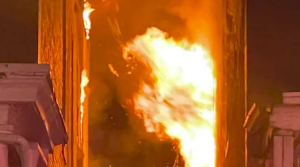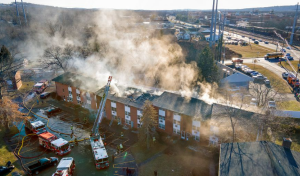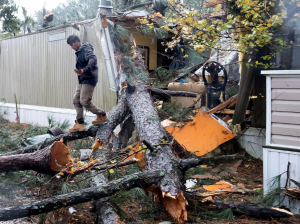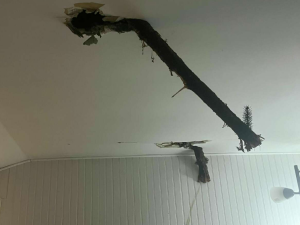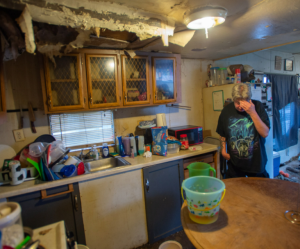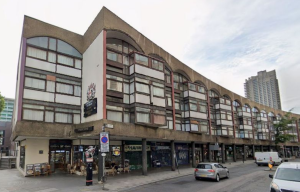
The U.S. is currently experiencing the most major disasters since 1980, when the Federal Government began keeping track. The disasters that have affected the U.S. this year, including hurricanes, floods, tornados, and hail, collectively killed over 250 people and caused more than $57 billion worth of property damage. They are also causing or exacerbating existing health problems in many regions. The impact of these disasters is felt disproportionately by renters and homeowners with low incomes.
While homeowners struggle to recover and prepare themselves for more severe weather conditions, they are faced with a new problem: the disappearance of insurance coverage. This could lead to a financial crisis in families and communities. It may also have an impact on mortgages and construction. The mounting losses from claims related to disasters have led several large insurers in California, Colorado Florida and Louisiana to cease writing new insurance policies.
Many states are seeing double-digit increases in premiums, increased deductibles, and reduced coverage. In many states, as private insurers withdraw from the market and residual markets (non-profit state chartered insurers of final resort) pick up the slack, they are being forced to do so at an unprecedented scale. In just three years, the percentage of homeowners who are not insured has increased from 5% up to 12%.
Only by addressing our risk problem can we fix the insurance crisis. Most homes were constructed in America to code that didn’t anticipate today’s rapidly growing extreme weather. Risk mitigation for each peril is specific. No one solution fits all, and those at greatest risk often lack the financial resources to make even modest improvements. As we saw in Alabama, investing in climate resilience requires creative thinking, innovative financing and collaboration.
Alabama began a retrofitting program for homeowners to improve their property’s ability to withstand hurricanes, tornadoes, and other windstorm events.
Strengthen Alabama Homes (SAH) is a program that offers grants up to $10,000 for homeowners to purchase a roof built to the Fortified(tm), construction standard. This standard was developed by Insurance Institute for Business and Home Safety after decades of testing and research. Fortified is proven to reduce or prevent losses caused by high winds, storms with hail and tornadoes, as well as hurricanes. Hurricanes are responsible for more than $1 trillion in damage and 6,890 deaths since 1980.
SAH has a far-reaching impact that goes beyond the grant recipients. Over 54,000 Fortified Roofs are installed in the U.S., with approximately 48,000 in Alabama. However, only 6,500 of these roofs were funded through grants. Fortified roofs have gained popularity due to the SAH’s success and their effectiveness. Alabama has trained roofing contractors and inspectors who educate homeowners on the Fortified standard. Entire subdivisions are now being constructed with Fortified roofs. After Hurricane Sally, in 2019, homeowners who had Fortified roofs experienced little or no damage to their roofs. Alabama’s commitment to resilience allows it to keep a competitive and stable home insurance market.
Another example of collaboration and innovation was in Lockport in Louisiana where a 35-home development built according to Fortified Standards, had been 90% completed by the time Hurricane Ida hit in August 2021. Les Maisons de Bayou Lafourche was spared major damage by the storm, which caused massive property destruction along other parts of the coast. The Louisiana Office of Community Development, Louisiana Homes Corporation and the Louisiana Office of Community Development provided a grant to support this project. In Les Maisons the majority of houses are reserved for those earning between 50 and 60% of the median area income. Veterans, people with disabilities, and senior citizens are given priority for residency.
North Carolina, South Carolina, and Louisiana have also created grant programs based on SAH. Grants were awarded in October last year. Other states are considering similar efforts.
Although mitigation standards are not yet established for other natural disasters, SAH’s and Les Maisons Storm Resistant Affordable Housing Community show what is possible when faced with increasing weather risk and an unstable insurance market. The National Institute of Building Sciences estimates that mitigation can save up to 13 cents for every dollar invested. We should invest in resilience instead of spending millions of dollars every year on disaster recovery. This means strengthening building codes to incorporate affordable, proven climate-resilient standard and dramatically increasing funding and incentives for retrofitting existing homes.
To change the way that we conduct business in order to put resilience first, it is necessary for the public and the private sector to work together. This includes state insurance regulators and state legislatures as well as public and privately owned insurance companies, homebuilders, contractors, and homeowners. The philanthropic sector can play an important role in supporting innovative approaches for building and retrofitting houses that will protect homeowners’ health and wealth, particularly those most at risk from climate-related damage.
To stabilize insurance markets, it is important to strengthen homes, communities and families. Now is the time to act. We need to know what to do.
Commercial flat roof inspection services are vital for your home’s integrity and long-term durability. Roofs can degrade over time due to wear and tear, weather conditions, or even age. This leads to structural problems, leaks, etc. Professional roofers offer comprehensive services, such as inspections, replacements and repairs. If you want to know more or get better information or see the multiple options we have, you can check The Roof Technician commercial roof inspection services in Toronto. Roofers are trained to address problems such as structural weakness, leaks or damaged shingles. Using expert roofing services will protect your home, preserve its value and help prevent damage caused by environmental factors. Professional assistance is essential for a safe and durable roof covering, whether it’s just a small repair or an entire overhaul.
